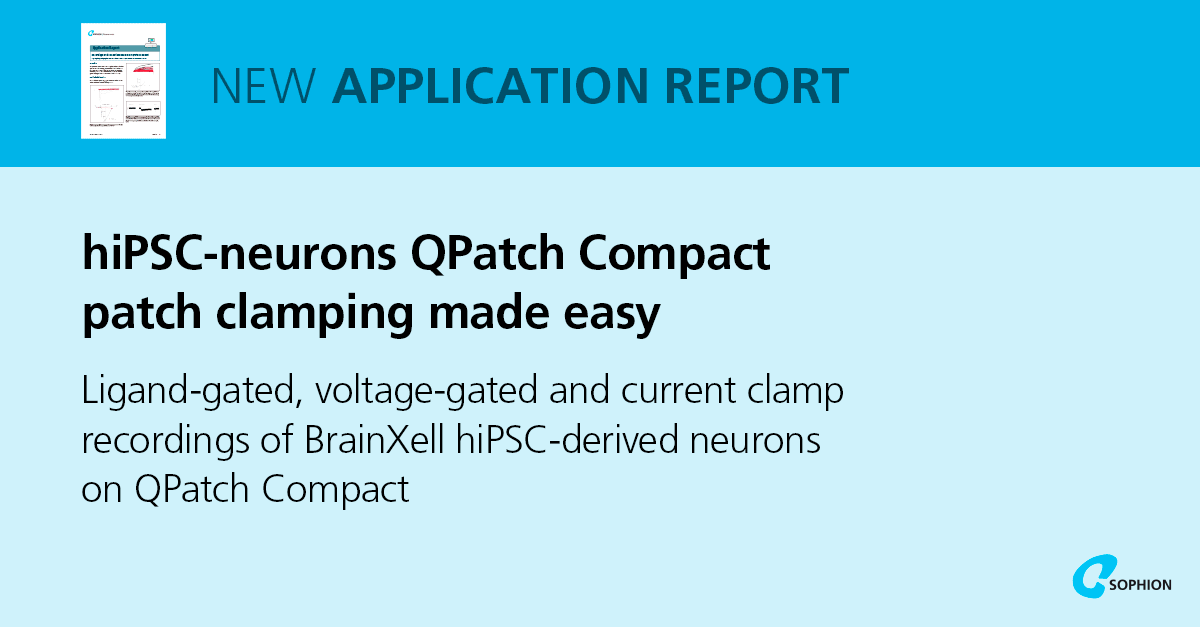
New Application Report: hiPSC-neurons QPatch Compact patch clamping made easy
Using BrainXell hiPSC-derived neurons (either glutamatergic or motor), we demonstrate that it is possible to record ligand- and voltage-gated currents, as well as action potentials, with QPatch Compact (QPC), achieving up to 60% whole cell success rates.
Electrophysiological characterization of BrainXell hiPSC-derived neurons using QPatch Compact
Recording ligand-gated currents in hiPSC-neurons
To probe ligand‑gated responses, we applied 150 µM AMPA in the presence of 100 µM cyclothiazide (CTZ) to our dissociated hiPSC-neurons.
- The data generated confirm robust AMPA‑mediated currents in BrainXell hiPSC-derived neurons, enabling higher‑throughput screening of glutamatergic pharmacology.
Voltage-gated Nav and Kv currents in hiPSC-neurons
Voltage‑step protocols revealed clear inward Nav currents, fully abolished by 1 µM tetrodotoxin (TTX). Outward Kv currents were partially inhibited by 30 µM tetraethylammonium (TEA) plus 4 mM 4‑aminopyridine (4‑AP), isolating the TEA/4‑AP‑sensitive component upon subtraction.
- These recordings illustrate precise control over ion channel pharmacology in BrainXell hiPSC-derived neurons, critical for disease‑modeling and safety‑pharmacology applications.
Action potential measurements via current clamp in hiPSC-neurons
Using a current clamp ramp from –100 pA to +75 pA, individual hiPSC-derived neurons exhibited a single action potential as the membrane voltage crossed the threshold (~–50 mV).
- This demonstrates that QPC can capture functional excitability in a high‑throughput manner, opening avenues for phenotypic screening of neuronal firing properties.
From network to single cell: preparation of hiPSC-derived neurons
A critical step for reliable recordings is the dissociation of neuronal networks into a pure, viable single‑cell suspension. Detailed protocols for optimal dissociation, cell handling, and assay setup are available upon request. Contact us at info@sophion.com for comprehensive guides and operating procedures for QPC assays with hiPSC-derived neurons.
